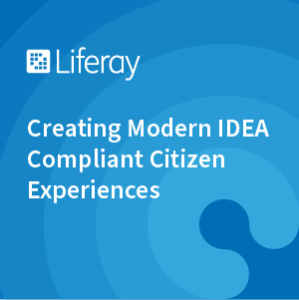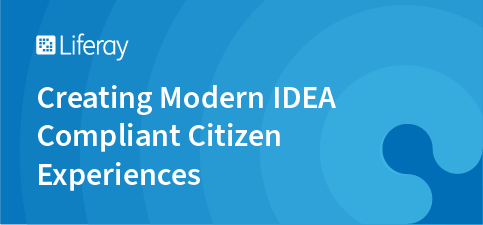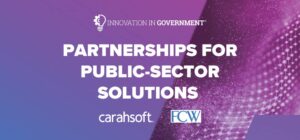Federal agencies are no longer expected to be just sources of information and services. They’re now tasked with providing digital experiences on par with those found on consumer sites. This starts with having a website compliant with the 21st Century Integrated Digital Experience Act (IDEA). It also means incorporating useful content, a personalized experience, and data management that allows non-technical stakeholders to update and maintain the site.
Among the many available resources for agencies to achieve IDEA compliance is the U.S. Web Design System (USWDS)—a library of code, tools, and guidance designed to help agency teams build fast, accessible, mobile-friendly websites. With the launch of USWDS 2.0 in 2019, the USWDS has become very adaptable with improved aesthetics and UX. This includes expressive theming to customize while remaining consistent with the system’s best practice guidance.
 Overcoming Challenges to Meet Citizen Expectations
Overcoming Challenges to Meet Citizen Expectations
While the USWDS goes a long way towards building better digital experiences, it doesn’t offer the capabilities to provide streamlined, responsive digital engagement. Hindered by legacy systems that lack integration capabilities, agencies often struggle with fragmented and incomplete data that prevents operational efficiency and the ability to offer a seamless experience. Other challenges include insufficient or outdated information and manual processing of paperwork which creates time-consuming hassles for both citizens and government employees. Leveraging a digital experience platform (DXP), that includes USWDS code and guidance, is an effective way to build a compliant government website that also delivers a relevant, personalized citizen experience.
The Powerful Addition of a DXP
A DXP provides a modern architecture for agencies to deliver connected experiences. The platform gathers actionable insights to meet today’s citizen expectations and can integrate with both modern and legacy technologies. With an open architecture DXP, plugins can be applied to the platform, incorporating 3rd party libraries, such as USWDS. In other words, the goals of achieving compliance and improving citizen experiences can be achieved with a single solution.
- Bridge Legacy and Modern Systems
With the addition of a DXP, agencies can connect disparate systems with a wide range of tools and APIs, combining data on a single, modern digital platform. The platform also can be scaled to meet the needs of citizens today and tomorrow.
- Deliver a More Relevant Experience
A DXP can offer the advanced capabilities of persona modeling, journey mapping, responsive layout, and data-driven design to create personalized, relevant interactions. It can learn and adapt to user behaviors and feedback to continuously fine-tune personalization across both live and self-service engagement channels.
- Provide Ready Access to Current Content
The challenge of finding information and manually processing paperwork can also be overcome. By effectively managing the entire lifecycle of content from creation to publishing, storage, maintenance, and deletion, a DXP enables the ability to immediately provide the optimal content to both citizens and staff.
- A Winning Combination
As the push towards digital transformation continues, delivering on the design and functionality expectations of citizens is critical. With Liferay DXP and the Liferay Theme Generator, federal agencies can create IDEA-compliant experiences, rather than just disseminate content, to deliver thoroughly modern websites. Learn more about how to create better citizen experiences with Liferay. Be sure to visit the Liferay Digital Experience Hub for more information on how Liferay helps government agencies improve their digital experiences.







